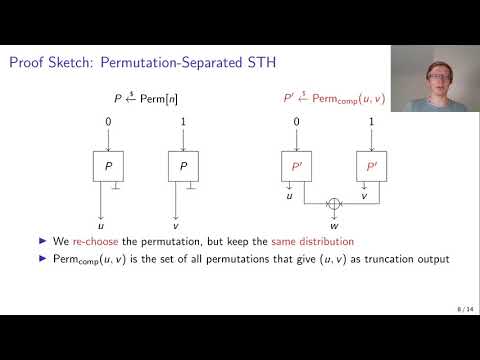CryptoDB
The Summation-Truncation Hybrid: Reusing Discarded Bits for Free
| Authors: |
|
|---|---|
| Download: |
|
| Presentation: | Slides |
| Conference: | CRYPTO 2020 |
| Abstract: | A well-established PRP-to-PRF conversion design is truncation: one evaluates an $n$-bit pseudorandom permutation on a certain input, and truncates the result to $a$ bits. The construction is known to achieve tight $2^{n-a/2}$ security. Truncation has gained popularity due to its appearance in the GCM-SIV key derivation function (ACM CCS 2015). This key derivation function makes four evaluations of AES, truncates the outputs to $n/2$ bits, and concatenates these to get a $2n$-bit subkey. In this work, we demonstrate that truncation is wasteful. In more detail, we present the Summation-Truncation Hybrid (STH). At a high level, the construction consists of two parallel evaluations of truncation, where the truncated $(n-a)$-bit chunks are not discarded but rather summed together and appended to the output. We prove that STH achieves a similar security level as truncation, and thus that the $n-a$ bits of extra output is rendered for free. In the application of GCM-SIV, the current key derivation can be used to output $3n$ bits of random material, or it can be reduced to three primitive evaluations. Both changes come with no security loss. |
Video from CRYPTO 2020
BibTeX
@inproceedings{crypto-2020-30433,
title={The Summation-Truncation Hybrid: Reusing Discarded Bits for Free},
publisher={Springer-Verlag},
doi={10.1007/978-3-030-56784-2_7},
author={Aldo Gunsing and Bart Mennink},
year=2020
}

